



“2C E6 85 DC 0B A7 9F 2C 71 CD 47 52 E2 77 CC D2 96 DB 9B 67 51 F4 34 FD 20 A4 0C 86 5A 02 65 B7 D7 68 B6 FB E5 79 31 03 B6 48 76 26 63 1F 19 DC E0 2C C5 CD 74 A4 80 36 A5 56 83 EF 59 2A E8 31” (2017) by Lars Holdhus, hereafter referred to as 2CE6, was exhibited at the Øx exhibition of cryptographic art operating in the tradition of 1960s Conceptualism curated by Sam Hart as part of the 2017 Ethereal Summit in New York (one of my smart contract pieces appeared in the same show).
2CE6 is a framed, partially obscured print of hexadecimal digits representing a cryptographic private key. The key is one of 5000 created by Holdhus to authenticate individual artworks over the course of his future artistic career. Exposing it in this way depicts the anxieties of both the artworld and cryptoculture and allows the viewer to reflect on their interaction. To explain why will require us to situate both the artwork and its materials within the history of art and encryption.
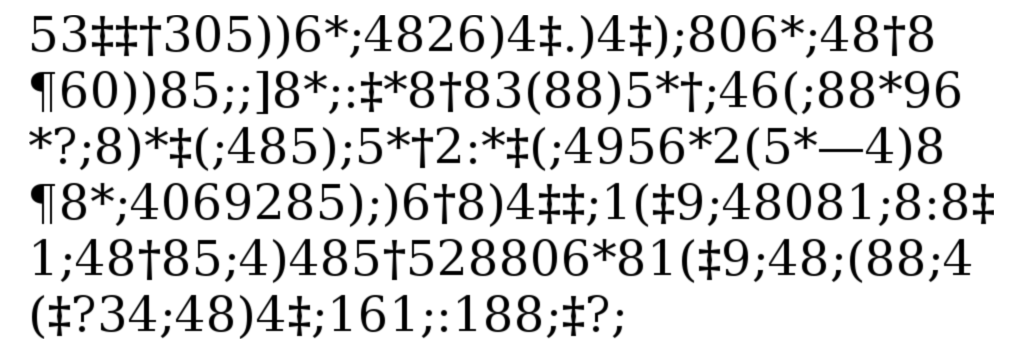
The re-emergence of cryptography as a popular pursuit in the Nineteenth Century starts with a link between code and art. Cryptography and deciphering were popularized by the American author Edgar Allen Poe, who later created the cryptographic literary form of the detective story. In Poe’s early story “The Gold Bug”, an encrypted message leads to hidden pirate treasure. It is the story of an investigation, but before and without the framework of the investigating detective that would find its fullest expression in the figure of Sherlock Holmes (see Franco Moretti’s “Graphs, Maps, Trees”, Verso, 2005, for how this framework fell into place). The detective story came to be a form of deciphering of human secrets and their traces, as Mediaeval cryptography had stood in relation to deciphering the mysteries of God’s creation at a time when the occult, science and cryptography had yet to differentiate themselves. Poe is a similarly liminal figure to mediaeval cryptographers such as Johannes Trithemius in his combining of cryptography, investigation, and spiritualism in literature and in practice. Poe held codebreaking competitions in newspapers and challenged readers to send them unbreakable codes. His writings on cryptography were required reading in the American intelligence community up to the early Twentieth Century. Further reflecting the Mediaeval relationship between cryptography and the occult (encryption and occultation), Poe was a popular subject for spirit mediumship after his death and for some time his most popular work was posthumous.

Contemporary cryptography starts not with the codebreaking conflicts of the Second World War (which for the most part just automated earlier systems) but with the discovery of Public Key Cryptography (PKC) at first secretly in the UK and then publicly in the USA in the 1970s. PKC allows messages to be encrypted using a separate key that cannot be used to decrypt it, which can therefore be made public. The secret key that is used to decrypt text that has been encryped by the public key is usually a large number (nowadays consisting of hundreds to thousands of bits) related to it by a “trapdoor function” that uses currently impossible-to-reverse mathematical operations like multiplying enormous prime numbers or multiplying points on complex curves. You are probably using PKC to read this website over the HITS protocol, it’s everywhere in contemporary communication and trade. Like the association of cryptography with the occult, this link between cryptography and trade goes back to the Renaissance.
The relationship between mathematics and cryptography stretches back even further, to earlier Arab herpetologists. This relationship was formalized by Claude Shannon in 1949, and operationalized by PKC. In previous eras, art had a similar relationship with mathematics as part of its self-image, for example in its geometries and colour theories, but Contemporary Art has a mathematics taboo. There is no reason why this should continue to be the case – public key cryptography can provide form, subject and content for art.
The points, lines and planes found in private and public keys and in the operations of encryption and decryption relate to mathematics and geometry in art. The mathematics of ratio and projection were common to Renaissance trade and to perspective. PKC has become contemporary trade math, although it has not yet led to an equivalent of perspective in art. While mathematics is a conceptual resource that strangely elicits disdain or hostility in the digital financialized era of contemporary art, Sol LeWitt showed that it can be used in a critical way. The textual and visual representations of these mathematical objects – long strings of hexadecimal or Base58 digits, QR codes and ASCII art – have both their own innate and contingent aesthetics.
These aesthetics can evoke the worlds of communication, commerce and espionage as they are determined in contemporary life by cryptography and its absences (backdoors, sidechannel attacks, quantum computing, etc.). Or the qualities and experiences of secrets, value, identity and trust (or, again, its absence) that they relate to. These are more concrete subjects than the instrumentalized Platonic realm of cryptographic mathematics, but they flow from them.
Taking a position on these or allowing the artwork’s participant to do so, presenting them for critical reflection or using them as indexes of broader social phenomena makes them content. Those phenomena include the economy, whether conventional finance or cryptocurrency, politics, whether secrecy or hacks of state actors and cypherpunk provocateurs, and the questions of identity, authenticity and permission that PKC and cryptographic hashing are applied to in networked media and culture.
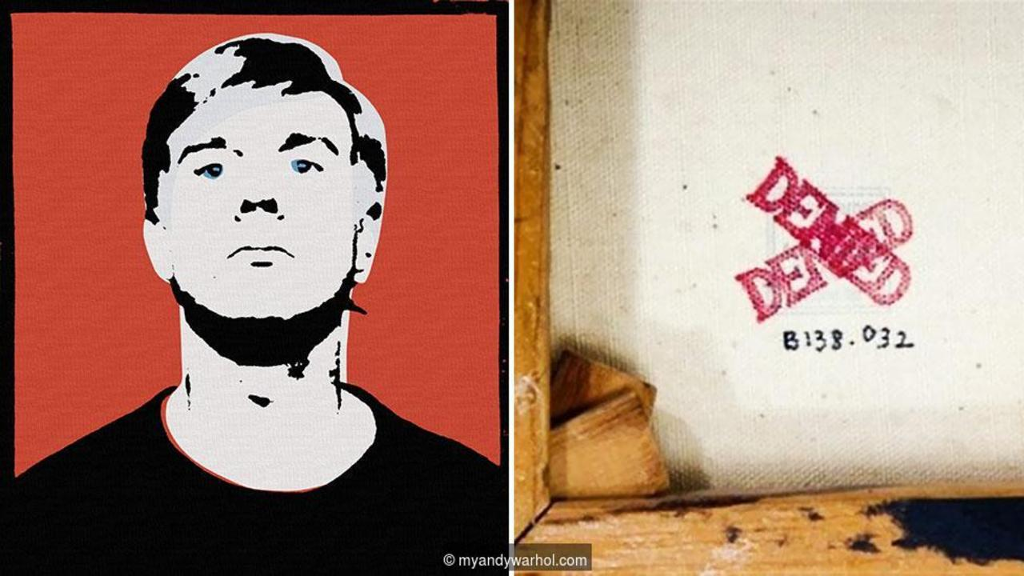
The presence of cryptography or its imagery in a piece of art need not function as any of these – apart from anything else an artwork can always fail. It may end up as a mess or as kitsh. These are modes of usually unintentional and visible inauthenticity, in contrast to the intentional but hidden inauthenticity of fakes. The fake is a problem for the art market and for the artistic and scholarly reputations that provide its capital. Catalogues raisonnes are meant to tackle the problem of the fake but the risks of authenticity and value that they carry make them a site of market and scholarly anxiety. When assembled late in an artist’s career or after their death by a foundation, a work being included or excluded by mistake carries the risk of lawsuits and monetary damages. This can have a chilling effect on both scholarship and on markets.
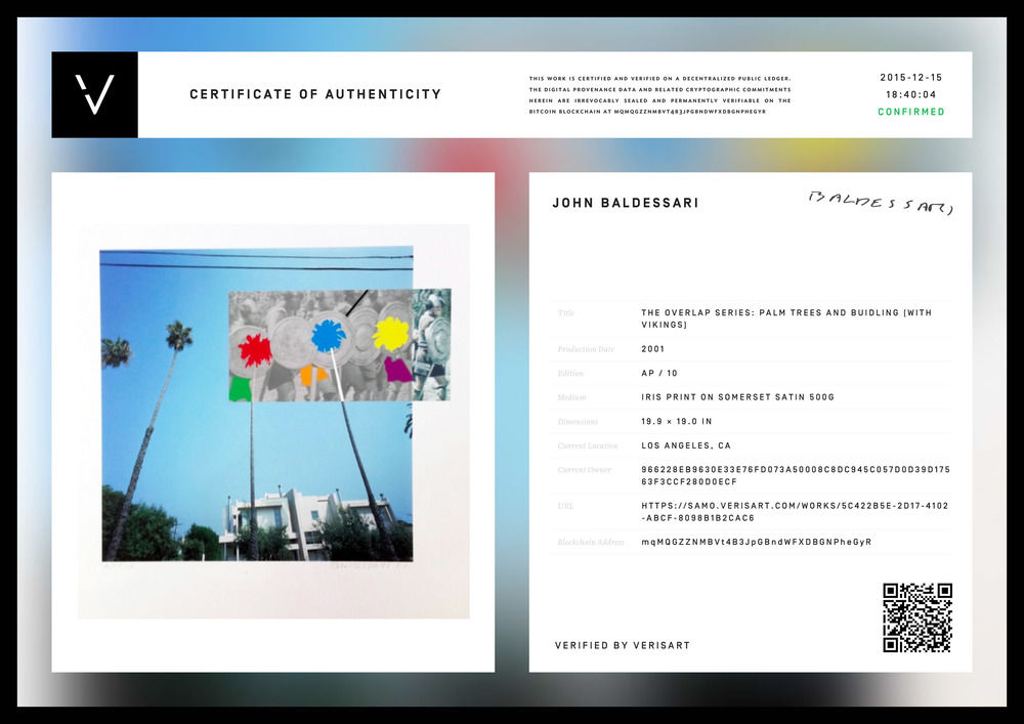
In theory, public key cryptography can help artists with this by being used to create a mathematically unforgeable “signature” code for each new artwork using the private key, which can be checked but not modified with the public key. This can take the form of a digital file, a radio frequency tag, or a QR code or print-out of the signature sealed from sight and attached to a physical work. As long as an assistant, gallerist or spouse doesn’t take a copy of the artist’s current private key and start making fakes, this is a secure way of constructing a catalogue of work that the artist has issued in their name. One of the stronger non-monetary uses of blockchains is to publicly record and timestamp such signatures. In particular this makes it impossible to claim that posthumously released works were released by the artist during their lifetime. This illustrates a way that the fake and its problems of identity authenticity and value relates to the double-spending problem that cryptocurrency solves.
Lars Holdhus is using non-blockchain PKC to authenticate and to limit the number of works they can produce. In 2CE6 the operational security of this strategy is deliberately broken. The first rule of PKC is never to give out your private key. Doing so allows anyone to read your messages (or steal your Bitcoins). The presentation of this act of exposure puts an anxious and fetishized strategy of authenticity and career/legacy construction at risk. It de-occults the information that would guarantee its authenticity (and thereby its value) in order to become or unfold as an artwork, constructing its cultural and economic value by an apparent act of destroying it and critiquing its materials in the process. Looking for a precedent for this leads to net.art and to Conceptualism (see “Conceptual Art, Cryptocurrency and Beyond“) but also to feminist art. The relationship between secrecy, artistic identity, authenticity and transparency has a precedent in the art of the Guerilla Girls. Their proposal to open a Gallery’s finances as the content of their show there likewise involves exposure of an occulted producer/resource of value and identity.
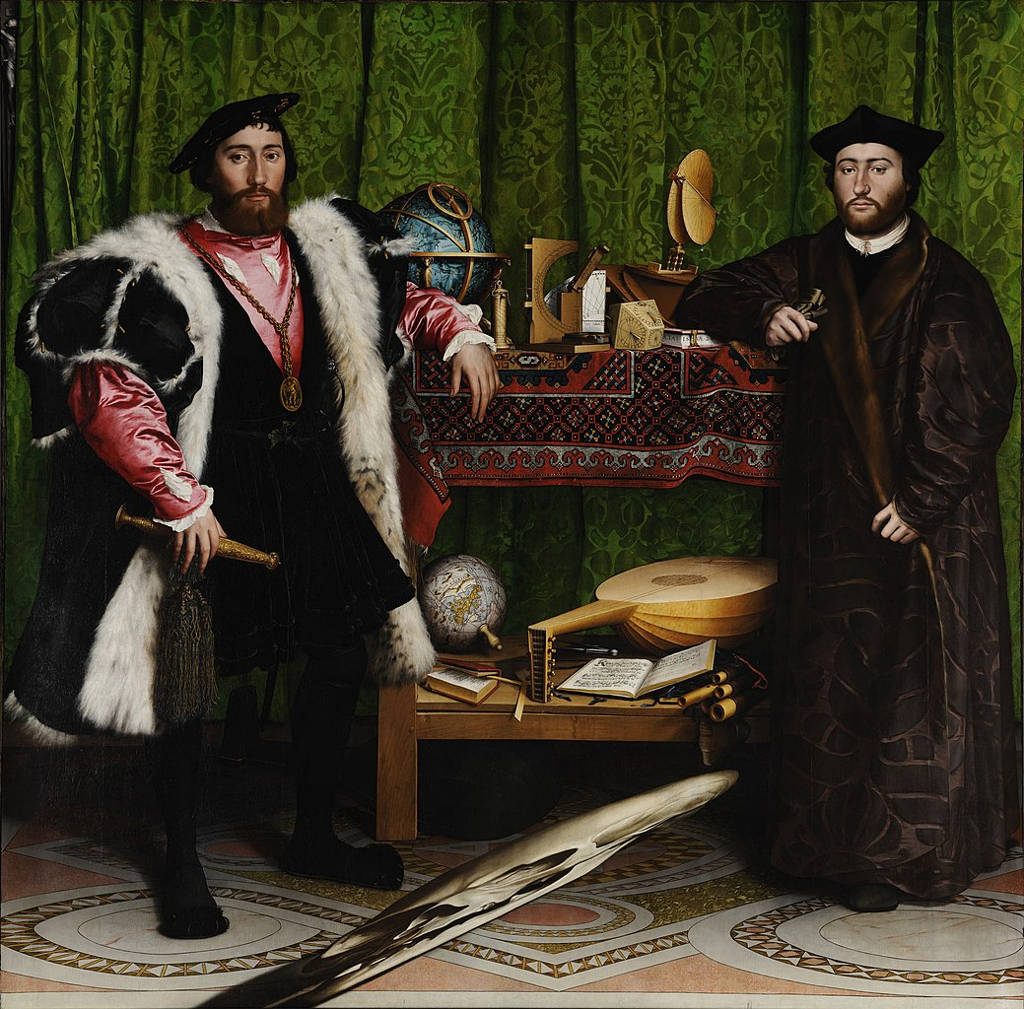
In 2CE6, Holdhus restores the historical link between the contents of art and of cryptography. The contemporary occult of the opacity of the art market, the security of value in trade, and their mathematics exist together cryptographically and artistically in it in a mutually problematizing, and therefore realistic, way. Cryptography functions here as artistic form, subject and content. When a public key is exposed, it is the end of its usefulness, it is dead. 2CE6 functions as a cryptographic memento mori, a post-Crypto Wars version of Holbein’s painting “The Ambassadors“.
Bitcoin is the leading cryptographic digital currency. Created in 2009 by the now possibly unmasked hacker Satoshi Nakamoto, it polarizes opinion. Some people promote it as the technical embodiment of a libertarian attack on the iniquity of “fiat currency” and the power of the state and big banks, an embodiment of a pure market of value untainted by regulation where everything really is worth only what people will pay for it. Others criticise Bitcoin, often savagely, for the same reasons and for what they perceive as its technical and social failings. But Bitcoin is interesting in ways that go beyond the concerns of its most vocal proponents and detractors.
Rather than paper money backed by gold or electronic money held on a bank’s central mainframe, Bitcoin exists as records of transactions in a public record called the blockchain, which is added to and authenticated by computers on the Internet running the Bitcoin software. Transactions in Bitcoin use cryptographic signatures rather than names or emails as the identities of the sender and receiver. Computers on the network that process and validate groups (or “blocks”) of transactions are asserting the existence of particular pieces of data at the time they are validated, a process rewarded by the production of new Bitcoins. To discourage malicious or false validations, each mining computer must perform a computationally and therefore resource expensive task known as a “proof of work”, which can be checked and confirmed by other computers on the network.
All of this means that Bitcoin is a massively distributed system for asserting identity, existence, and truth, for values of those concepts that are outsourced to a community of mathematical proxies. The blockchain is essentially a time-stamped record of information that anyone can add to in order to prove that a particular piece of data existed at a particular time. This has applications beyond finance, with examples of new systems for blogging, contracts, corporations and Internet Domain Name services all being based on the block chain system. In many ways it is the blockchain and these applications of it that is the most exciting part of Bitcoin.
Money, cryptography (the making and breaking of codes) and alternative currencies all have long and often intertwined histories. Renaissance banks used secret codes to secure messages sent between city-states. Alternative savings or currency systems such as Green Shield Stamps, LETS or Air Miles were all popular at different times in the Twentieth Century. The first cryptographic digital currency was Digicash, from 1990. And Bitcoin isn’t the first multimillion dollar electronic currency. Linden Dollars, the virtual currency used in the Second Life online virtual reality environment, were used in USD567,000,000 of economic activity in 2009. Bitcoin solved the problems that prevented previous digital currencies from becoming decentralised, and although newer digital currencies have improved on its design it is Bitcoin that has captured people’s imagination.
Bitcoin has encouraged a debate about what money is, what money is for, and how money should work, indeed its production, use, and successors have embodied that debate. It’s created a sense of possibility and a range of production comparable to the early World Wide Web. And it’s launched parodies such as the Buttcoin site and the meme-based cryptocurrency DogeCoin, and the epithet “Dunning-Krugerands”. Bitcoin’s mining system rewards existing capital, and its transaction costs reward intermediaries in much the same way as existing banks and credit cards. But these are implementation details, and newer cryptocurrencies and national cryptocurrencies address them. Post financial crisis, cryptocurrency with all its possibilities and contradictions is a lightning rod for the social imagination. And this includes art.
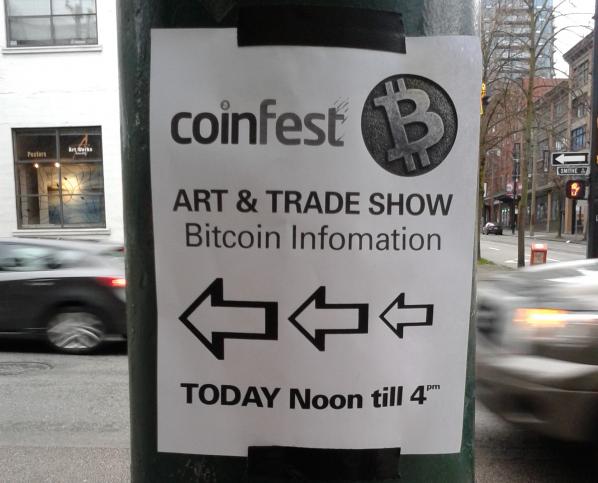
Coinfest 2014 in Vancouver featured examples of artists using Bitcoin. Buskers performing at the event could be tipped in Bitcoins, graffitti and mixed-media art being exhibited could be bought with Bitcoins. And in the computer lab at the venue each desktop PC displayed a piece of net art with a Bitcoin theme. This was the show “Computers and Capital”, curated by Erik H Rzepka and Wesley Yuen, also viewable online at http://x-o-x-o-x.com/press/computersandcapital/. It includes art depicting bitcoins, art visualizing wealth in terms of bitcoins, and work that evokes the operation of Bitcoin-like cryptocurrency.
thereisaprobleminaustralia’s “Bitcoin Garden” is an html5 alife pond populated by shoals of rippled and faded Bitcoin logos. It’s reminiscent of 90s Director alife, and might benefit from more of that algorithmicity. But as a post-internet tumblr assemblage it’s irresistibly calming and ironic. Bitcoin’s promise of a financial artificial paradise rendered organic, or hydraulic models of the economy leaking into the network.
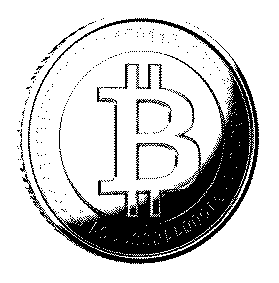
Jon Cates’s “817C01N” is a stark monochrome Floyd–Steinberg dither (an algorithm used on early Macintosh computers to convert colour or greyscale images to binary) animation of a broken iPhone spinning in front of a glitching animation “bitcrushed” from Manuel Fernandez’s “Broken Phone Gradients”. Networked art for a networked currency, it’s a clean, minimalist look afforded by a historical best-of-breed algorithm, an aesthetically and conceptually satisfying digital classicism. And it’s for sale in exchange for Bitcoins.
Ellectra Radikal’s “E.Rad Coin” is a Vasarely-meets-Twister undulating grid of distorted and colour gradient coin shapes. It’s the aesthetic equivalent of Bitcoin’s ethics: the market economic view of society as Conway’s Life with pennies given a post-digital twist.
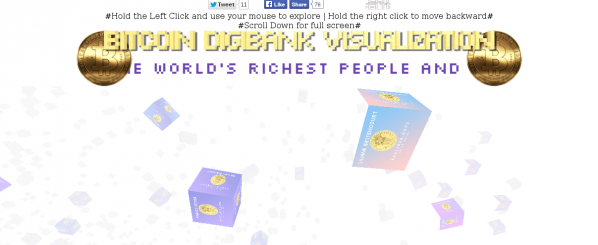
FELT’s “Bitcoin Digibank Visualization” is a financial hyperspace of cubes showing the value of the world’s rich quantified in Bitcoins floating in an endless whiteness. This shows both Bitcoin’s status as a separate economic plane and the ability of existing capital to colonize any resource-based attempt to escape its reach.
Giselle Zatonyl’s “Pop Coinfalls” is a video loop of analogue noise and digital compression glitched falling and stacking coins with a PowerPoint-hell upward graph line animated over them. Blink and you’ll miss it but there are faces on or reflected in the gold of the (Bit)coins as they pile up ever higher. The economy is like that.
Matt Tecson’s “lel buttcoin” is a tumblr blog zoom (an impressive subversion of the vertical scroll bar) of found imagery mostly on the theme of “buttcoins”, a common pejorative for Bitcoins. Coiyes, Bartcoins, and Radeon graphics cards intrude, presumably as they matched the search used to find buttcoin images.
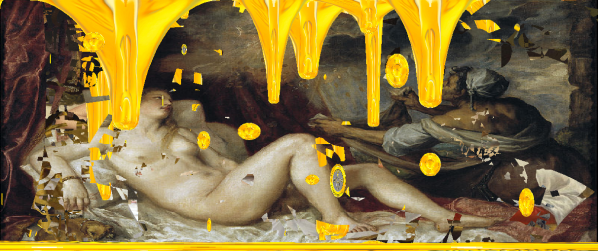
Roger Grandlapin’s “Danaë” is a Flash animation of Bitcoins dripping like honey over animated negative-space text, a porny neoclassical nude of the title and other imagery that I’m not fast enough to make out. Bitcoin’s origin story is related to those of older mythology as a shower of golden rain from Satoshi Nakamoto.
Kutay Cengil’s “Untitled” is a slightly glitched, default material rendered bust of a webcam-foreheaded, PayPal security-badged, melting financial mandarin. This is what Bitcoin is here to save us from, although in a recent interview the CEO of PayPal had more faith in Boitcoin than in NFC.
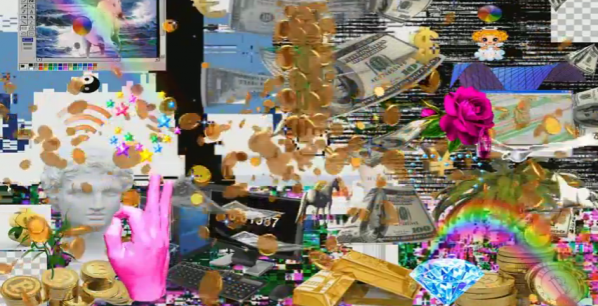
Systaime’s “Bitcoin Abundance” is a highly compressed YouTube video loop of the dross of 90s PC video clips surrounding a rain of bitcoins. It’s the opposite of Jon Cates’ piece. Visual Vaporwave, the kind of transubstantiation of kitsch that art is meant to do. It’s a formally rich composition, amusing and affecting. But even when I remove my cybercultural and net art historical horses from this race I’m left with the problem that it’s not clear how this aesthetic can fail.
Devon Hatto’s “letsnetworth” is another tumblr, this time of animated GIFs of compositions of that symbol of knowledge (and fashionable digital design), the apple. Digitisation, sustenance and symbolism combine here much as they do in Bitcoin. The net wealth of wealth on the net.
Adam Braffman’s “$$ULOGY” is a YouTube video of Dogecoins (the inflationary, Meme-mascoted rival to Bitcoins), Super Mario Bros gameplay, burning dollars and other found video imagery, with a brief visit from MST3K and a cheesy industrial and soft rock soundtrack interleaved with an echoing apocalyptic economic lecture. Its an impressionistic take on cryptocurrency and the environment in which it exists.
Nicolas Koroloff’s “Green Impact” is an image of a pile of Eurocent coins with a single transparent green bead or BB pellet in the middle. This is a reference to Bitcoin’s of-touted environmental impact due to the electricity expended in mining. The comparison between this energy footprint and that of fiat currency ATMs, chip and pin readers, and other elements of the global banking system probably compares to the relationship depicted here.
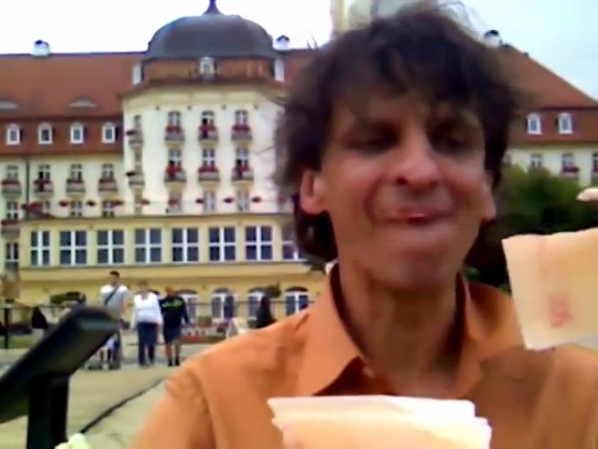
Dominik Podsiadly’s “I’ll eat any amount of EU subsidies” is a video performance of the artist smoking, drinking, and doing just that with some large edible 500 Euro notes. The Euro is a political instrument as much as a financial one, and its crisis has been another factor driving interest in alternative currencies, including Bitcoin.
Chimerik’s “Chimerikcoin” is a packed square graph puzzle that rearranges itself to fit as you drag rectangular fragments of an old gold coin around to reveal brief peaks of paper money. It’s the economy as a zero-sum game and Bitcoin as a digital return to the gold standard.
Miyö Van Stenis’s “Bitcoin Dreams” is an interactive html5 animation of settling Bitcoins in front of a cloudy sky and animated curtain. It’s an unusual and effective combination of tightly looped animation and interaction with a vaporwave aesthetic.
ASS Rain’s “Trees” is a collage of translucent green blocks dropped spillikins-style. I found it aesthetically and conceptually opaque, although a very effective composition.
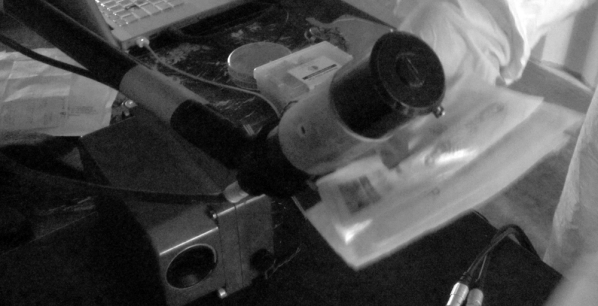
Robert B. Lisek’s “Quantum Enigma” uses a geiger counter to generate an encryption key for communication, ironically realising the promise of quantum crytography. It’s a historically and technically literate project that communicates a strong political stance while remaining technically and aesthetically interesting.
The ability to curate such a show online and present it as part of a wider cultural event marks a moment where the widespread availability of Internet access, Web 2.0 publication platforms, and computer labs at event and community spaces has transformed the possibilities for curating and contextualising digital art. “Computers and Capital” exploits these affordances very effectively. The recurrent themes, of pennies from heaven, ironic digital kitsch, glitchy compression artefacts, and potlatch, feel both appropriate and effective in visually communicating and critiquing the technical and social complexities of cryptocurrency in the age of austerity.
Bitcoin has caught the attention of the public, government, criminals, and artists. It is both an expression of the economic imaginary and a genuinely novel means of networked communication. This makes an unusual subject for art, whether celebratory or critical. Even the most ironic celebrations of Bitcoin in art are depictions of a network protocol, or a deflationary electronic currency. Whether visually and conceptually preparing us for a brave new world of cryptocurrencies or creating the illusory realm in which they will achieve their only lasting victory, Bitcoin art is very different from a Warhol dollar sign, a Hirst diamond skull, or the other symbolic band-aids for the ideological aporia of capital’s hollow victory. It is the art of a heresy rather than a hegemony, of a moment of technological, social and aesthetic possibility.
“Computers and Capital” very successfully captures this moment in art and makes it accessible in ways that thousands of words on the subject cannot. A thought-provoking, illuminating and often fun collection of work of a uniformly high standard that is nonetheless technically and aesthetically diverse can be presented online and off as part of a wider cultural event. “Computers and Capital” shows how network-enabled digital art can function as a bridge between complex and important ideas and the public imagination.
The text of this review is licenced under the Creative Commons BY-SA 4.0 Licence.